Table of Contents
Cooking and History
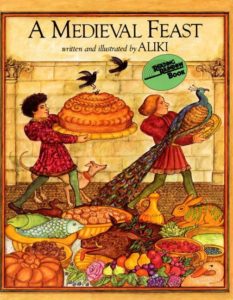
|
Cooking, castle-style. In Aliki’s marvelously illustrated picture book A Medieval Feast (HarperCollins, 1986), the king is coming to visit Camdenton Manor and everyone is busy preparing for a magnificent (and expensive) feast. Text and pictures, crammed with detail, describe hunting and fishing, baking and brewing, and all the contributions to the feast from vineyards, herb gardens, kitchen gardens, barns, and beehives. For ages 4-8. |
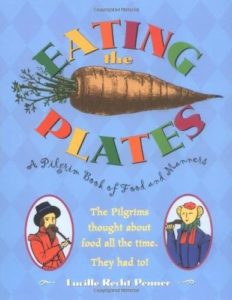
|
Eating the Plates: A Pilgrim Book of Food and Manners by Lucille Recht Penner (Aladdin, 1997) is an absorbing history of Pilgrim foods, cooking, and table manners, with ten simple recipes for a complete Pilgrim meal. For ages 7-12. |
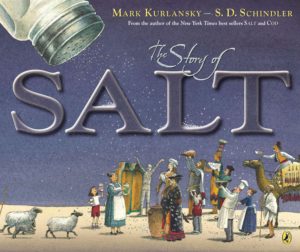
|
Mark Kurlansky’s The Story of Salt (Putnam Juvenile Books, 2006) is a delightfully illustrated history covering all aspects of salt. Trust me; it’s fascinating. For ages 8-12. (For teenagers and adults, see Kurlansky’s Salt: A World History (Penguin Books, 2003).) |
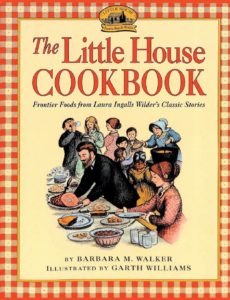
|
Barbara Walker’s The Little House Cookbook (HarperCollins, 1989) is a collection of “Frontier Foods from Laura Ingalls Wilder’s Classic Stories.” The book contains historical information about the life and food of the pioneers, quotes from the Little House books, and recipes for such Ingalls family favorites as hasty pudding, pancake men, sourdough bread, pumpkin pie, crab-apple jelly, and cucumber pickles. For ages 8-12. |
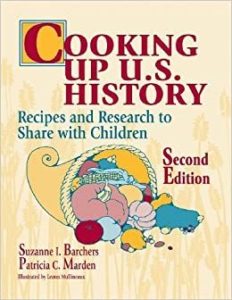
|
Cooking Up U.S. History: Recipes and Research to Share With Children by Suzanne I. Barchers and Patricia C. Marden (Libraries Unlimited, 1999) includes recipes for such traditional American foods as porridge, Indian pudding, and sourdough bread, and for such homemade necessities as candles, soap, and ink. Recipes are categorized by historical period, from pre-Columbian days to the Civil War. Each recipe is accompanied by background information, discussion questions, suggested research projects, and supplementary reading lists. For ages 6-12. |
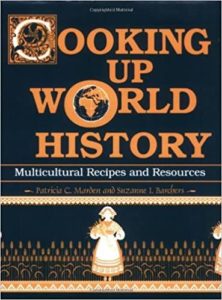
|
Cooking Up World History by Suzanne I. Barchers and Patricia C. Marden (Libraries Unlimited, 1994) is a collection of multicultural recipes from 22 different countries or regions, with accompanying research questions and annotated book lists. Readers make African banana fritters, British Yorkshire pudding, French mousse au chocolat, Indian chapattis, and Scottish scones. For ages 6-12. |
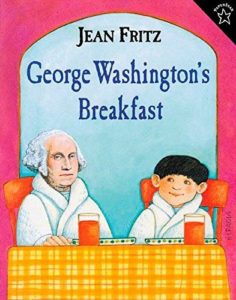
|
By Jean Fritz, George Washington’s Breakfast (Puffin, 1998) features young George Washington Allen, who knows a great deal about George Washington – including the names of his horses and dogs, and his shoe size – but doesn’t know what the great man ate for breakfast. After a lot of persistence and research he finds out – and convinces his grandma to cook it. For ages 7-10. |
| Have Breakfast with George Washington includes a quote about Washington’s breakfast from his step-granddaughter, Nelly Custis Lewis, and a recipe for Washington’s favorite hoecakes. | |
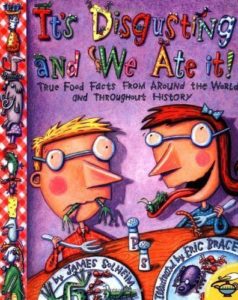
|
James Solheim’s It’s Disgusting – and We Ate It! (Aladdin, 1998), subtitled “True Food Facts from Around the World and Throughout History,” is an account of unusual dishes and surprising foods that people worldwide eat or have eaten in the past – among them fried grasshoppers, robins, earthworm soup, and camel hump stew. Included are zany illustrations, fascinating facts, and clever poems. For ages 8-12. |
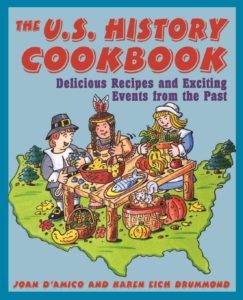
|
By Joan D’Amico and Karen Eich Drummond, The U.S. History Cookbook (John Wiley & Sons, 2003) is a collection of “Delicious Recipes and Exciting Events from the Past” arranged in chronological order from “The First Thanksgiving” through “Colonial Fare,” “A Pioneer Breakfast,” “Plantation Life,” “A Victorian Tea,” “Making Do During the Great Depression,” “World War II Rations,” and “Fabulous Fifties Foods” (and more). Make your own cornmeal mush, beef jerky, depression cake, and TV dinners. For ages 9-12. |
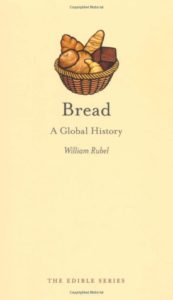
|
Published by Reaktion Books, the Edible Series is a collection of catchy short (128-page) global histories of a wide (wide) range of foods. Titles include Pizza (Carol Helstosky), Cheese (Andrew Dalby), Ice Cream (Laura B. Weiss), Cake (Nicola Humble), Bread (William Rubel), Soup (Janet Clarkson), Hot Dog (Bruce Kraig), Pancake (Ken Albala), Sandwich (Bee Wilson), and many more. For the complete list, see The Edible Series website. Fun for foodies ages 13 and up. |
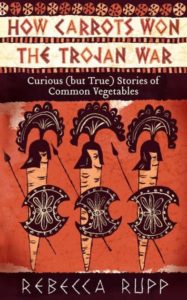 |
Rebecca Rupp’s How Carrots Won the Trojan War (Storey, 2012) is a catchy history of vegetables, crammed with interesting information and anecdotes. Find out how a pirate named the bell pepper and what corn has to do with vampires. For teens and adults. |
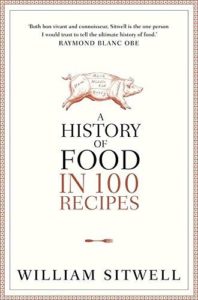
|
William Sitwell’s illustrated A History of Food in 100 Recipes (Little, Brown and Company, 2013) is a witty chronological history of food, beginning with a bread recipe gleaned from an ancient Egyptian tomb – and then on to roast goat, salted ham, pasta, party planning (circa 1420), hippocras jelly, “peas soope,” the invention of the sandwich, Rice Krispies treats, and the rise of food TV. A great read for teenagers and adults. |
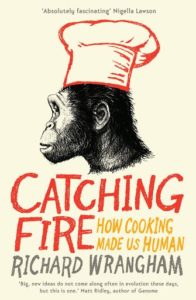
|
Cooking, argues anthropologist Richard Wrangham, made human beings what they are today. In Catching Fire: How Cooking Made Us Human (Basic Books, 2010), Wrangham argues that once our ancestors learned to control fire some 1.8 million years ago, they also learned to cook – an inspired leap that both provided us with more and better food and eventually led to smaller jaws, bigger brains, complex social structures, and civilization. For teenagers and adults. |
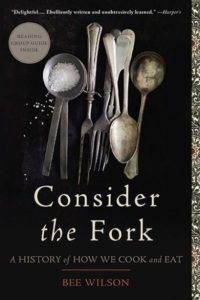
|
Bee Wilson’s Consider the Fork (“A History of How We Cook and Eat”) (Basic Books, 2012) is an addictive history of cooking and eating, packed with fascinating – and surprising – information. Various chapters cover pots and pans, the history of knives, cooking with fire (always risky), eating utensils (fingers, tongs, chopsticks, and spoons, as well as the title fork), and more. For teenagers and adults. |
| The Food Timeline is an annotated timeline of food and cooking from prehistory (17,000 BCE) to the present, packed with quotes from historians, excerpts from period cookbooks, general information, historical recipes, and more. A terrific and wide-ranging resource. |
